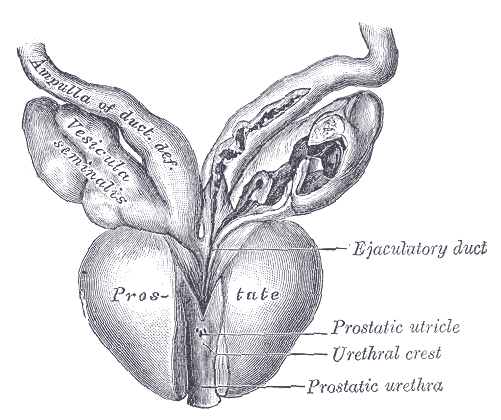|
(Image courtesy of StemBook) The blood–testis barrier is a physical barrier between the blood vessels and the seminiferous tubules of the testes. The term is a bit misleading as it is not a blood-organ barrier, but rather one that is formed by the tight junctions between Sertoli cells of the seminiferous tubules. For this reason, this barrier is also referred to as the “Sertoli cell barrier”. The barrier isolates further developed germ cells from the blood.
Survey developed, conducted, and reported on by Edward Morris, Male Contraceptive Initiative Intern This survey was distributed through university students at a Southern US university (n=20, with 19 respondents completing the entire survey). Recruitment was done through a student group and other personal relationships and is not representative of any population.
The aim of this survey was to understand the perceptions that this group of African American women have about potential future male contraceptive methods, and how their experiences with female contraception may potentially inform their perception of male methods. A secondary goal was to help inform future marketing efforts by understanding where participants get information on contraception and how they respond to that information. (Image courtesy of by Henry Vandyke Carter) Named after Enrico Sertoli, an Italian physiologist, Sertoli cells are a specialized cell type found in the testicles. Specifically, they are located in the seminiferous tubules of the testes and they facilitate the production of new sperm, or, spermatogenesis.
(Source: Public Domain) Also known as Cowper's glands (named for English anatomist William Cowper), the bulbourethral glands are two small glands in the reproductive system of male humans, and many male mammals, that produce and secrete a pre-ejaculate fluid called Cowper's fluid, known colloquially as “pre-cum”.
(Image source: Henry Vandyke Carter, in public domain) The ejaculatory ducts are a part of the male anatomy that allows the flow of sperm from the testes through the reproductive system and eventually out through the urethra.
(Source: Internet Archive Book Images) The penis is the primary sexual organ that male animals use to inseminate females (or hermaphrodites) during copulation, or sexual intercourse. It is the male genital organ of higher vertebrates that carries the duct for the transfer of sperm during sexual intercourse. In humans and most other mammals, it consists largely of erectile tissue and serves also for the elimination of urine. It lies between the legs of a man, above the testicles.
(Image source: Viva Differences) The urethra is a tube that connects the bladder to the urinary opening for the removal of urine from the body of both females and males. It is the vessel through which urine passes after leaving the bladder, and the conduit in men for semen during sexual intercourse.
Daniela (she/her/ella) is an MPH student at UNC Chapel Hill studying Health Equity, Social Justice, and Human Rights. She was drawn to MCI due to her passion for reproductive justice and sex positive education. During her practicum at MCI, she will be developing toolkit materials aimed at college students and young adults, as well as creating social media content and a social media engagement plan for the organization. What have you focused your studies on? How does that relate to male birth control?As an MPH student, I am focusing on health equity and am interested in equity within the sexual and reproductive health field. To me, health equity is inextricably tied to bodily autonomy; until everyone has the rights and access to healthcare, education, and resources to make informed decisions about their bodies, their lives, and their futures, then we will never truly have bodily autonomy. When it comes to deciding what does and does not happen to your body and your future, birth control has been incredibly important for millions of people over the last half century. However, we have a long way to go to ensure that everyone has a birth control method that works for them, which is what led me to work with MCI this summer.
(Source: Ferenc Husvéth) Capacitation, generally speaking, is the change sperm undergo in the female reproductive tract that enables them to penetrate and fertilize an egg.
This step is a biochemical event; the sperm moves normally and looks mature prior to capacitation. It is important to note that once the sperm reaches the egg, it does not mean that it is capable of fertilizing it immediately. In order to fertilize the egg, the sperm must undergo the process of capacitation in the reproductive tract where a number of enzymes and signaling molecules are involved. This process can take around 10 hours, which means that the fertilization time is approximately 24 hours. |
Categories
All
Archives
June 2024
|
|
|
Donate to Male Contraceptive InitiativeYour generous donation makes a difference!
|
© Male Contraceptive Initiative. All rights reserved.










 RSS Feed
RSS Feed
